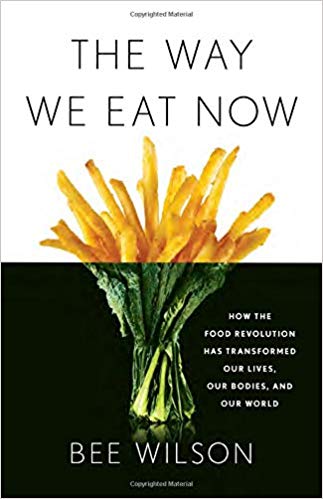You have /5 articles left.
Sign up for a free account or log in.
 The Way We Eat Now: How the Food Revolution Has Transformed Our Lives, Our Bodies, and Our World by Bee Wilson
The Way We Eat Now: How the Food Revolution Has Transformed Our Lives, Our Bodies, and Our World by Bee Wilson
Published in May of 2019.
Far too often, the stories we tell each other about higher ed are either dismal (demographic drop-offs, cost disease, adjunctification, public disinvestment, etc. etc.) or rapturous (innovation, experimentation, digital, etc.).
Higher education, however, might be better thought of as Bee Wilson thinks about food.
For as Wilson explains in The Way We Eat Now, we are living in two simultaneous food realities.
On the one hand, global eating patterns have never been more worrying.
The industrial food system, cheap sweeteners, and vegetable oil, and the relentless corporate marketing of low-nutrient/high-calorie snack food combine to damage people’s health across the planet.
The entire world is moving towards a diet of too much red meat, too much sugar and vegetable oils, and too much highly processed food. The shift away from reasonable portions of home-cooked vegetable-based meals is driving elevated rates of obesity, diabetes, and heart disease.
At the same time, a growing number of eaters (particularly in wealthy countries) nowadays enjoy an abundance of opportunities to cook and eat quality, nutritious, and delicious foods.
In urban areas, specialty food shops selling organic vegetables and free-range meats have proliferated. The number of farmers markets in the US has increased from 2,000 in 1994 to 8,600 today.
Even a standard suburban supermarket stocks 40,000 items. We may not be taking as much time to cook as our grandmothers did, but when we do cook, we have many more options when it comes to the ingredients in our meals.
In The Way We Eat Now, Wilson brings both of these food stories together.
Wilson is clear-eyed about the destructive decisions that we have taken when it comes to food but optimistic that we can choose a different path.
The book is full of ideas for governments to incentivize more healthy eating, and for families and individuals to make small but impactful changes in how we purchase and prepare our meals.
What might Bee Wilson make of our higher ed system?
Wilson lives in England, but maybe one of her three kids (who make delightful food and cooking related appearances in the book) will one-day study in the US. If her kids did cross the pond, they would no doubt enjoy the best undergraduate experience the world has to offer.
There is still no country on earth that does higher education as well as the United States.
How can a higher education system with so many problems and challenges also be the best in the world?
Another way to ask this question is to wonder if it is possible to take the best parts of US higher education - the places where privileged kids like those of Bee Wilson would have access - and diffuse those qualities across the ecosystem?
Can we find a way to reverse the trends of concentration of wealth, status, and quality among a few institutions?
How much effort are the haves of higher ed expending on fighting for resources for public institutions, and in particular community colleges?
A writer with the skills of Bee Wilson would also be able to identify the fantastic education developments at colleges and universities that are too often left out of the story.
The vast majority of students are educated at public institutions, and that is where most of the action around improving teaching and learning are occurring. Today, the world’s best educational experiences may be happening at small, tuition-driven liberal arts schools - places that don’t get much attention.
The Way We Eat Now is both honest about the food mess that we find ourselves, and hopeful about the food future that is in our power to create. Can we think about higher ed in the same way?
What are you reading?








